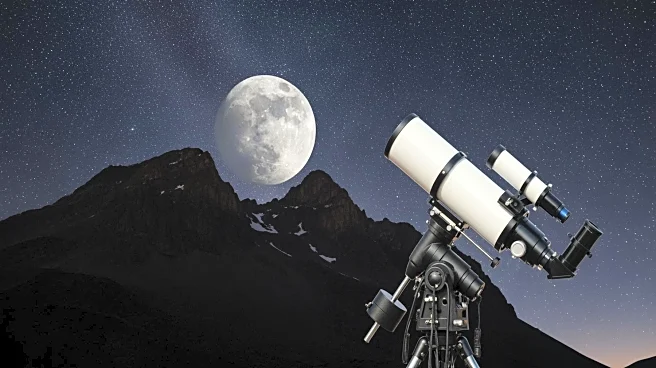What's Happening?
A photograph of the gibbous moon was captured in the Chilean Andes, showcasing one of the moon's brightest phases. This phase occurs when the moon is more than half illuminated but not yet full, or just after full when it's starting to wane. The image
was taken by Petr Horálek of NOIRLab in the Atacama Desert, a region known for its astronomical observatories like the Very Large Telescope (VLT) and Atacama Large Millimeter/submillimeter Array (ALMA). The gibbous moon provides extended natural light at night, making it an ideal time for astronomers and stargazers to observe lunar craters and highlands.
Why It's Important?
The gibbous moon phase offers excellent visibility for studying lunar features, which is crucial for both professional astronomers and amateur stargazers. This phase symbolizes growth and transition, resonating with ancient and modern observers alike. The image highlights the importance of the Atacama Desert as a prime location for astronomical research, contributing to our understanding of celestial phenomena. The extended natural light during this phase can aid in various scientific observations and enhance public interest in lunar exploration.
What's Next?
The continued observation of the moon during its gibbous phase will provide valuable data for lunar studies. Astronomers may use this opportunity to conduct detailed analyses of the moon's surface, contributing to ongoing research in lunar geology and history. Public interest in lunar phases may lead to increased participation in astronomy-related activities, fostering a greater appreciation for space exploration. The Atacama Desert will remain a key location for astronomical research, supporting future discoveries and advancements in the field.
Beyond the Headlines
The cultural significance of the moon and its phases has been a subject of fascination throughout history. The gibbous phase, representing transition and growth, may inspire discussions on the moon's influence on human culture and its role in shaping our understanding of the cosmos. The image from the Chilean Andes highlights the intersection of science and culture, offering a unique perspective on the moon's impact on both scientific research and cultural narratives.















